Yawanawá Challenges
Current problems, achievements and struggle to defend their territories
Over the last few decades, the problems that Yawanawá communities have had to face are related to miners, loggers and missionaries.
Of these three groups, the missionaries have historically treated the Yawanawá in an abusive and destructive way. The missionaries invaded and destroyed the indigenous territories that they approached supposedly to do humanitarian work. Their interest was to convert the indigenous people to Christianity in order to exploit them.
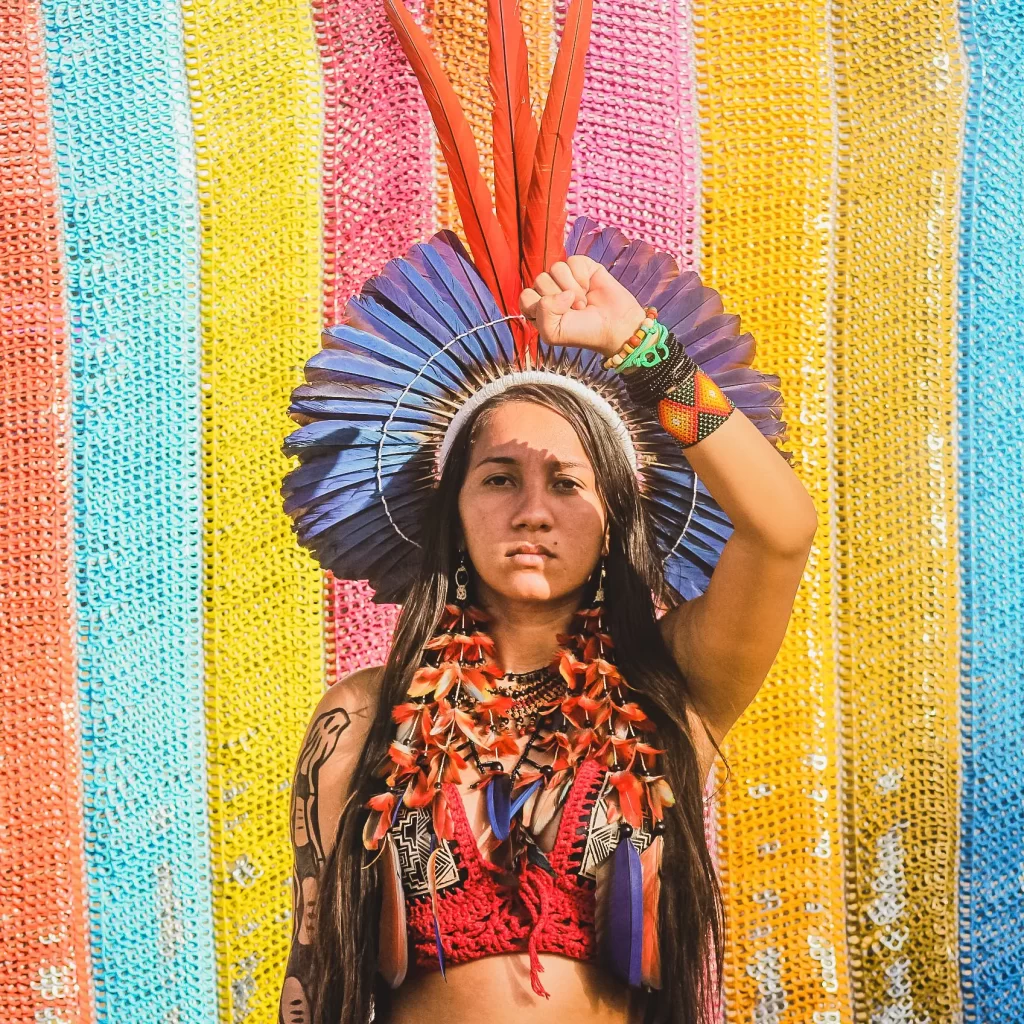
There were missionaries linked to the Paranacre company, which enslaved the Yawanawá. The company bought land next to the Indigenous Territory to extract rubber and exploit the land for cattle ranching.
In the 1980s, the spiritual and political leader of the Yawanawá, Bira, finally managed to expel them from their land. Bira was a companion in struggles of the well-known Chico Méndez, the Amazon activist murdered by ranchers who became a world symbol for the defense of the Amazon territory.
He has also been a companion in struggles of Marina Silva, current Minister of the Environment of Brazil. In the 1980s, he created, together with other Amazonian leaders, the Alliance of the Peoples of the Forest, who finally confronted the rubber tappers.
Four decades ago, Bira began a revolt in his land: at 18 he organized his community to expel the evangelical missionaries who had subjugated them; They were forbidden to speak their language or practice their traditions and allowed to be exploited by rubber tappers as slave labor.
The exploitation of native rubber –Hevea brasiliensis– required living in the forest. Food, tools, weapons and medicines came from the barracão, a store near the extraction areas, where they were bought on credit, or from the regateros, boats that sold the products between these new populations on the banks of the rivers.
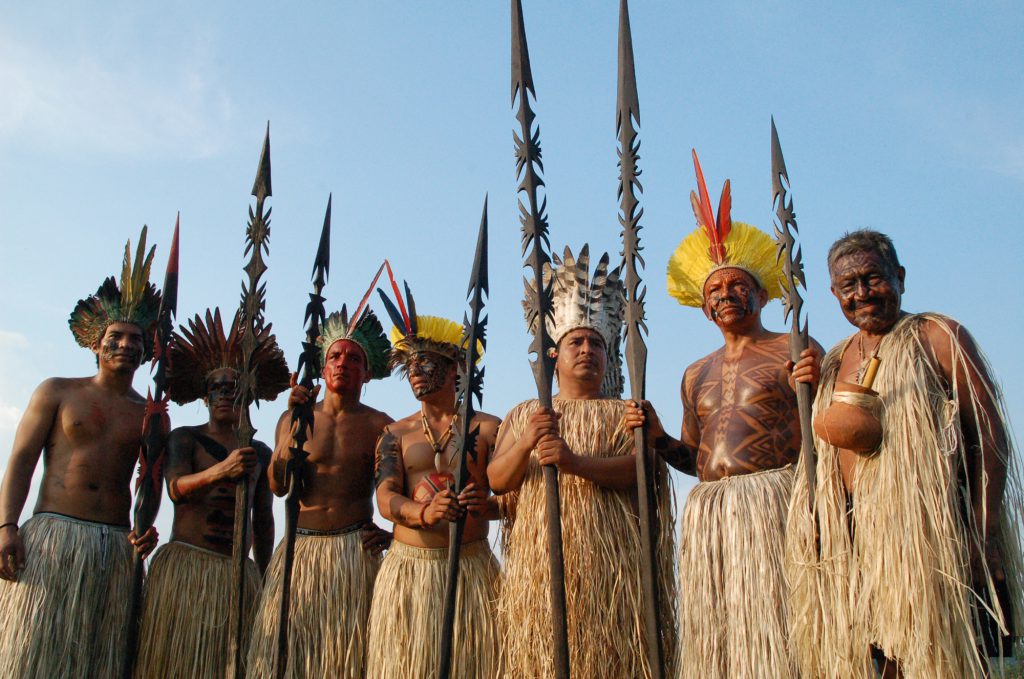
The encounters between Peruvians and Brazilians and indigenous populations were constant and oscillated between alliance and war. Ethnic groups were intentionally decimated because they were presumed to be aggressive. On the other hand, some alliances arose between indigenous people and bosses who, in exchange for tools, weapons and food, hunted and showed them the paths to rubber trees in the jungle.
The violence of the missionaries in the territory caused a cultural ethnocide. The evangelists prohibited the tribes from speaking their languages, playing and singing their music, using their clothing and body pigments and forced them to work as slaves in rubber plantations. Freedom and autonomy finally arrived with Bira’s struggle.
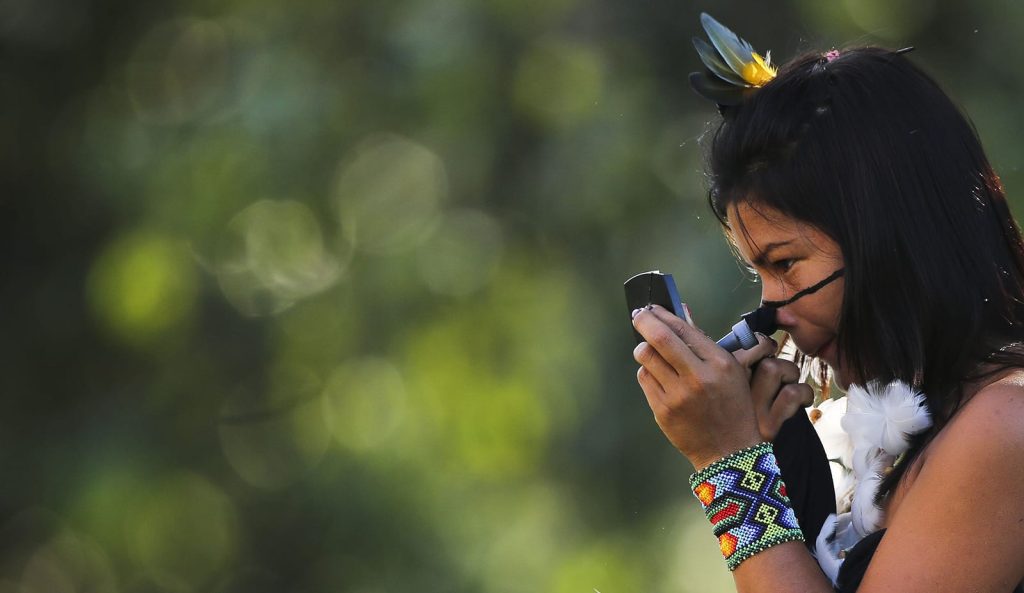
However, with the arrival of the far-right Jair Bolsonaro to the Brazilian government in 2019, the indigenous peoples of the Amazon were once again threatened by the same groups that historically try to eliminate them: illegal mining and fishing, loggers, land occupation, the expansion of the agricultural frontier and missionaries. Bolsonaro’s policies not only gave the green light to the advance of logging in the area and the expansion of cattle ranching areas, but he also shared the racist view of the missionaries towards the indigenous Amazonian peoples and placed evangelical leaders to administer the areas.
It is also known that Bolsonaro covered up murders (some even accuse him of planning them) of environmental leaders and journalists who went to the area to report worldwide what was happening. In June 2022, British journalist Dom Philips, a contributor to The Guardian and The Washington Post, and indigenous activist Bruno Araujo were murdered while trying to reach the Sacred Village, where the Yawanawá leader Bira lives, with whom he had arranged an interview. They were documenting the work that indigenous people were doing to protect the territory from the invasion of mafias and drug trafficking.
Peruvian reporter and author Joseph Zárate said: “These apparently modern, civilized lives of ours are actually like a carpet that hides the barbarity that happens in the places where natural resources are extracted.” Traveling to these places, Joseph explains, allows one to bear witness to “the depredation of the forest, the death of rivers, the extermination of indigenous populations.”
Marta Peirano, a writer and journalist, specialising in the intersection between technology and power, says: “What interests me about the jungle or places far from the city are the alternative ways of dealing with common problems, thinking that the climate crisis, the lack of water, access to energy, transport, agriculture, access to food, are common problems,” she explains. In the jungle, and in some parts of the countryside, there are “a variety of different solutions for the same thing, because they are local solutions.
Often old solutions, somehow adapted to the contemporary, and above all, distributed solutions. That is to say, they are not monolithic solutions, but are contaminated by the idea of the common and are threaded into the tradition of common practices.”
Learning to live with the land, says Marta, to live with the local, to flow with the space to which you belong, is a practice “that is the opposite of what we have in the city. The city is the triumph of technology over nature: it is an electrified asphalt island with centralized services that depend on processes entirely generated by man. The water we drink is treated with chlorine, the land is treated with cement, the houses are made of concrete and iron.”
The struggles of these Amazonian inhabitants have been so well known worldwide that even famous people have been present on their lands with the intention of supporting the preservation of their culture, which implicitly entails the care of the Amazon rainforest.
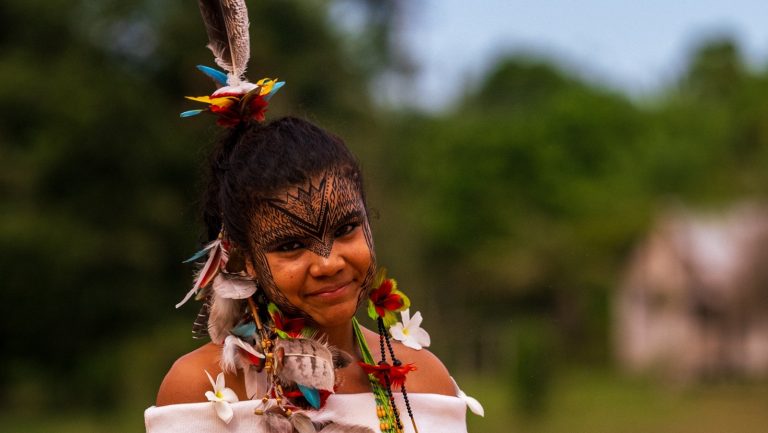
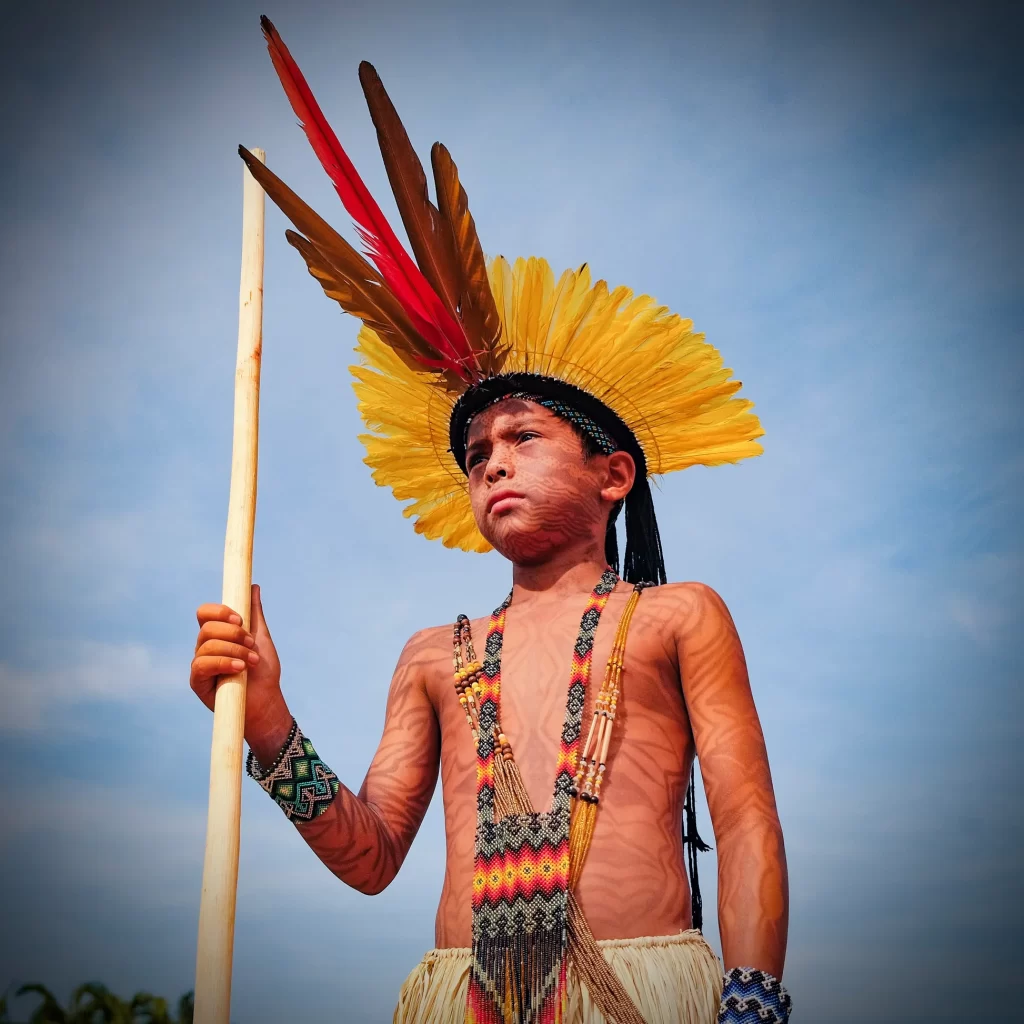
Actor Joaquin Phoenix, for example, was on Yawanawá lands in early 2020 to film a documentary. This year, 2024, Leonardo Di Caprio was with the Bira leader at an event. The actor is participating in a digital art project with the Yawanawá, who, as we can see, have woven networks all over the world. They also collaborate with some cosmetics companies by providing them with the natural pigment they use to paint their bodies.
Avatar, the film, is based on this Amazonian tribe. All this does both good and bad to the continuity of the tribe, who suddenly find themselves represented on the big screens of cinema around the world, travelling on the big Hollywood carpets.
We can say that in some cases the contrast between their traditional life in the jungle and their glamorous travels is extreme. The younger ones are eager to travel around the world, to play the game of money, of alcohol. The older ones became very well known throughout the world by giving lectures, rituals. Now they want to return to their Amazonian hometowns and invest the money they have earned there to preserve their tribe and their culture.
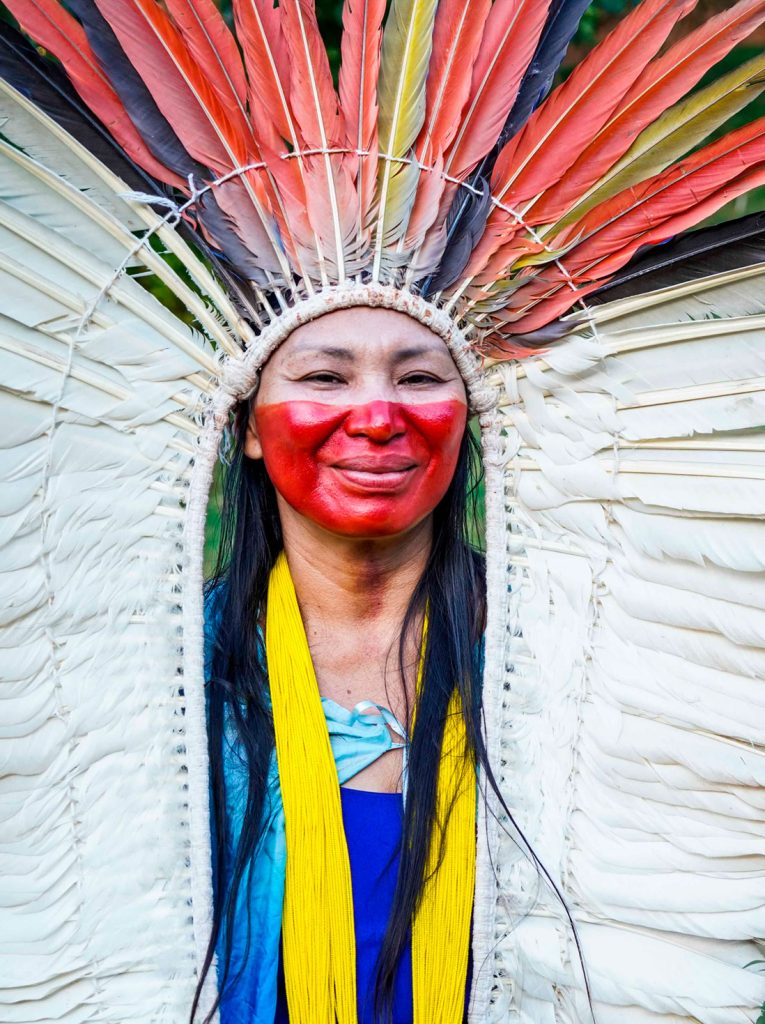
Today there is a very powerful one, Putany, Bira’s wife, who is the first shaman of a new saga of women healers – who had disappeared for many years, the years in which the Yawanawá lived under the control of the evangelists.
She survived the test of living alone in the jungle for a whole year. Afterwards, she returned to the village and told the tribe about all the visions she had had during that time. This helped to restore the women’s strength and their confidence in the tribe. The women began to sing again and to be present in the rituals. She did a lot of work for the women, giving them the strength to be part of the initiatives.
Ultimately, the Yawanawá tribe is an example of the defense of the territory and of the ancestral Amazonian culture. They are an icon that shows how indigenous communities can protect themselves, live well and help the white man in his spiritual awakening and connection with nature for future generations.
Many Yawanawá make use of social networks such as Twitter or Facebook to be present in the global community, and they also connect with foreign allies to establish research and production projects.
“The most difficult thing is to maintain the balance between tradition and the new, because tradition is inferred by education and respect for living with nature, and maintaining the physical and cultural integrity of a people. At the same time, the new things we seek outside are often not understood as a way of supporting, but rather to destroy the community.
For example, money. We do not have the custom of handling money, so money can be an instrument to support, to change, to build some things but it can also be the destruction of an indigenous people.” says Tashka, leader of a Yawanawá village.
“Our shamans say that something is wrong with the world regarding climate change,” says a young Yawanawá in London, in a TED talk. “People have lost the notion of the balance between giving and receiving. They only want more and more, to receive without limits. It is as if the world has lost control. What people need is more love and to understand each other. This balance brings direct benefits to nature.
In the Western world there is no real awareness of the common, of the public as something that is necessary.” He then adds: “Many indigenous peoples are losing their lands due to monoculture sugar and soy plantations and are being displaced, condemned to live in poverty, without a home, without food. They have lost their land and with it everything else, their life, their culture.” “For us, the forest, the jungle, is life. If there is no jungle, there is no life. But that is how it should be for all humans if we had a little more awareness.”
